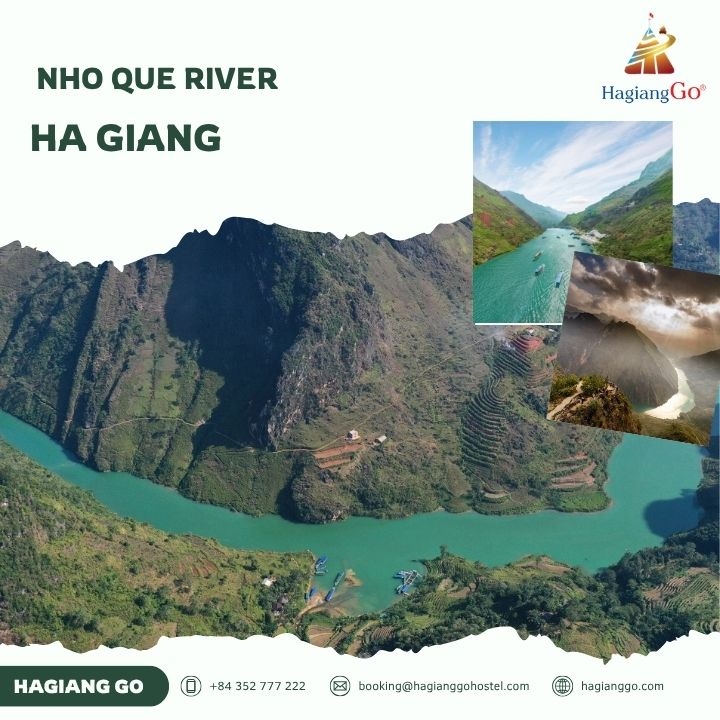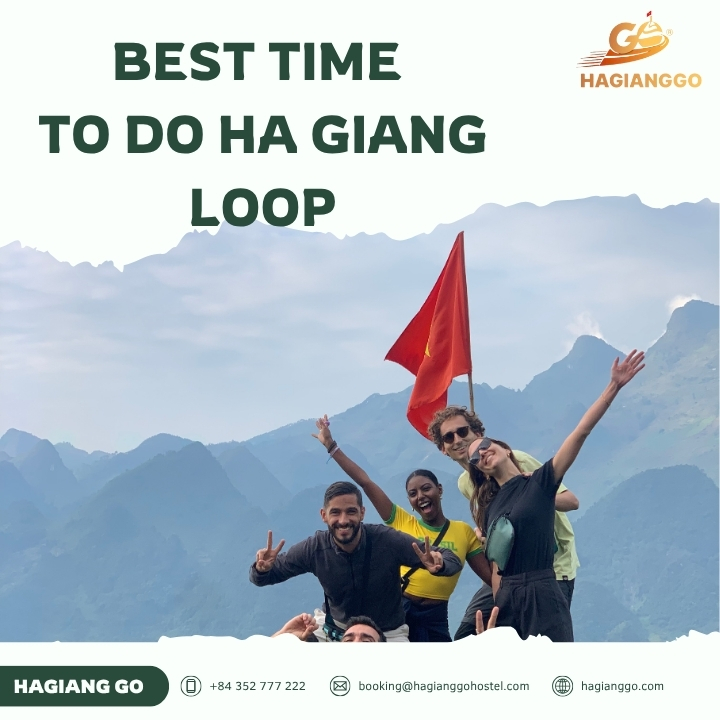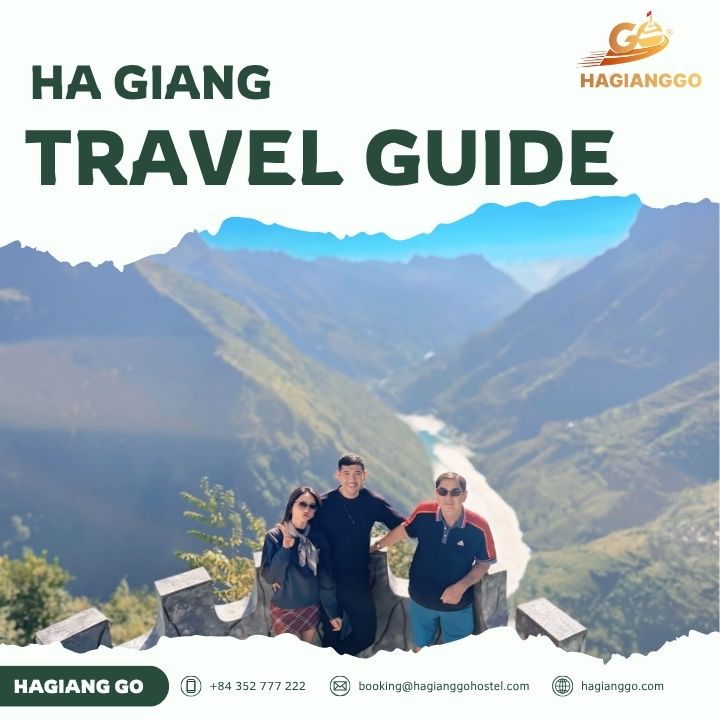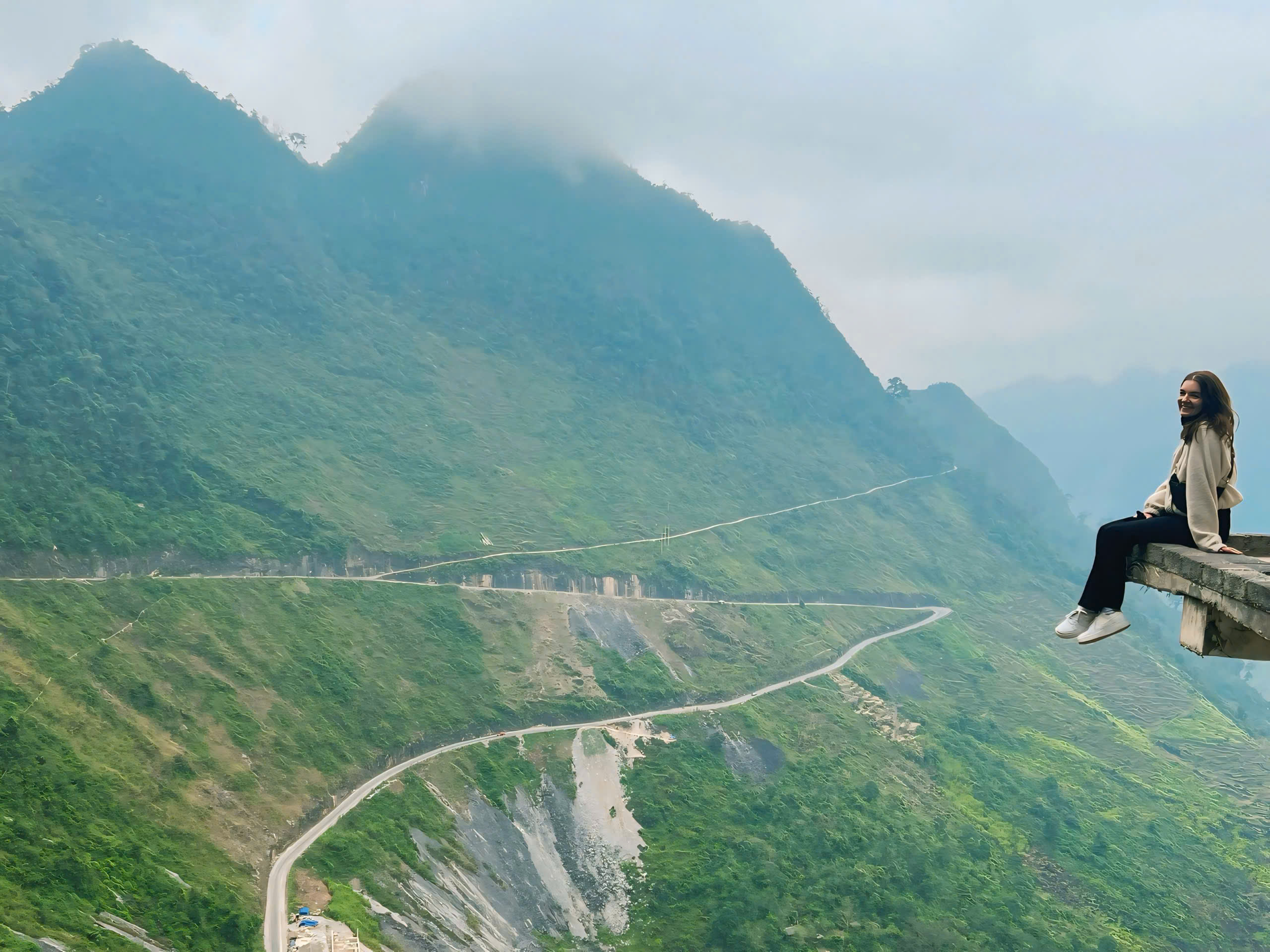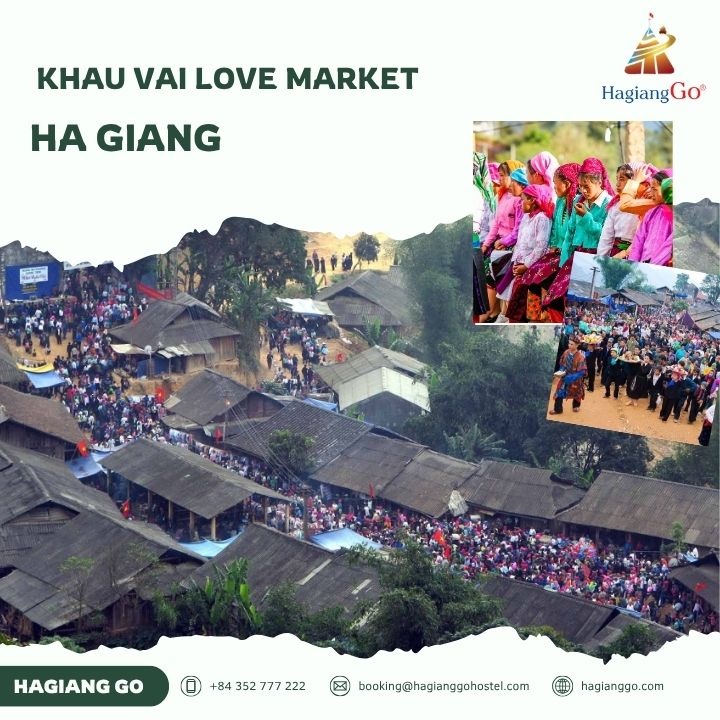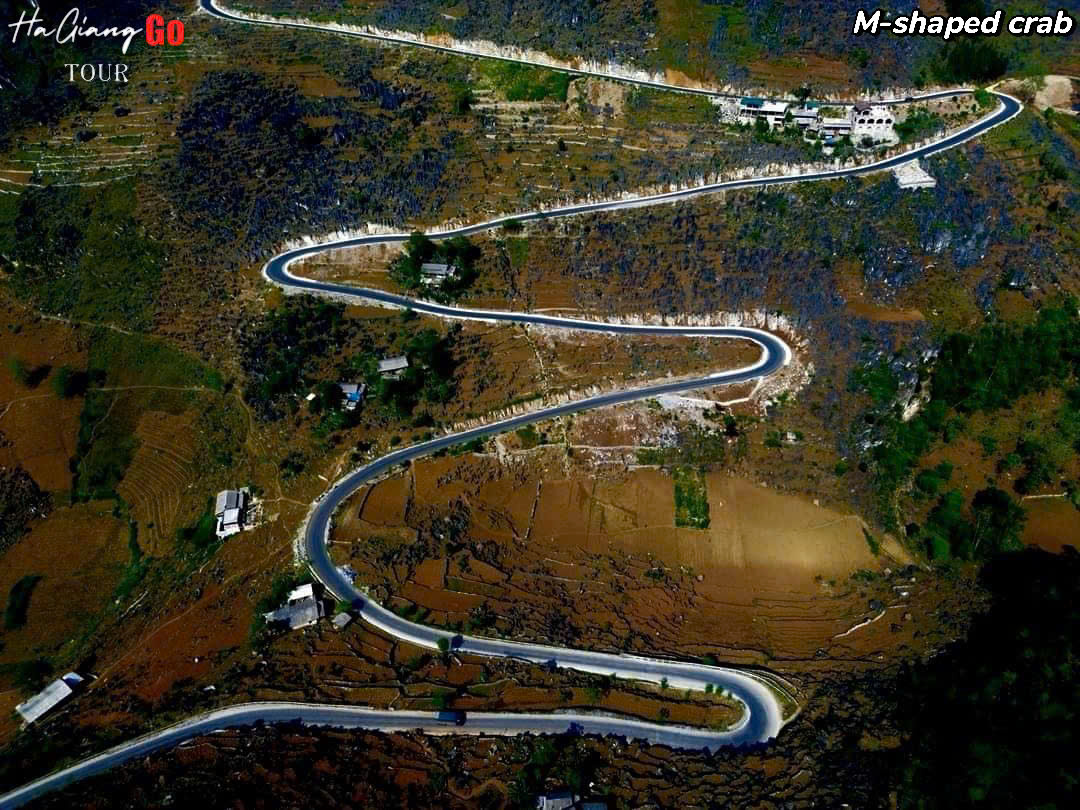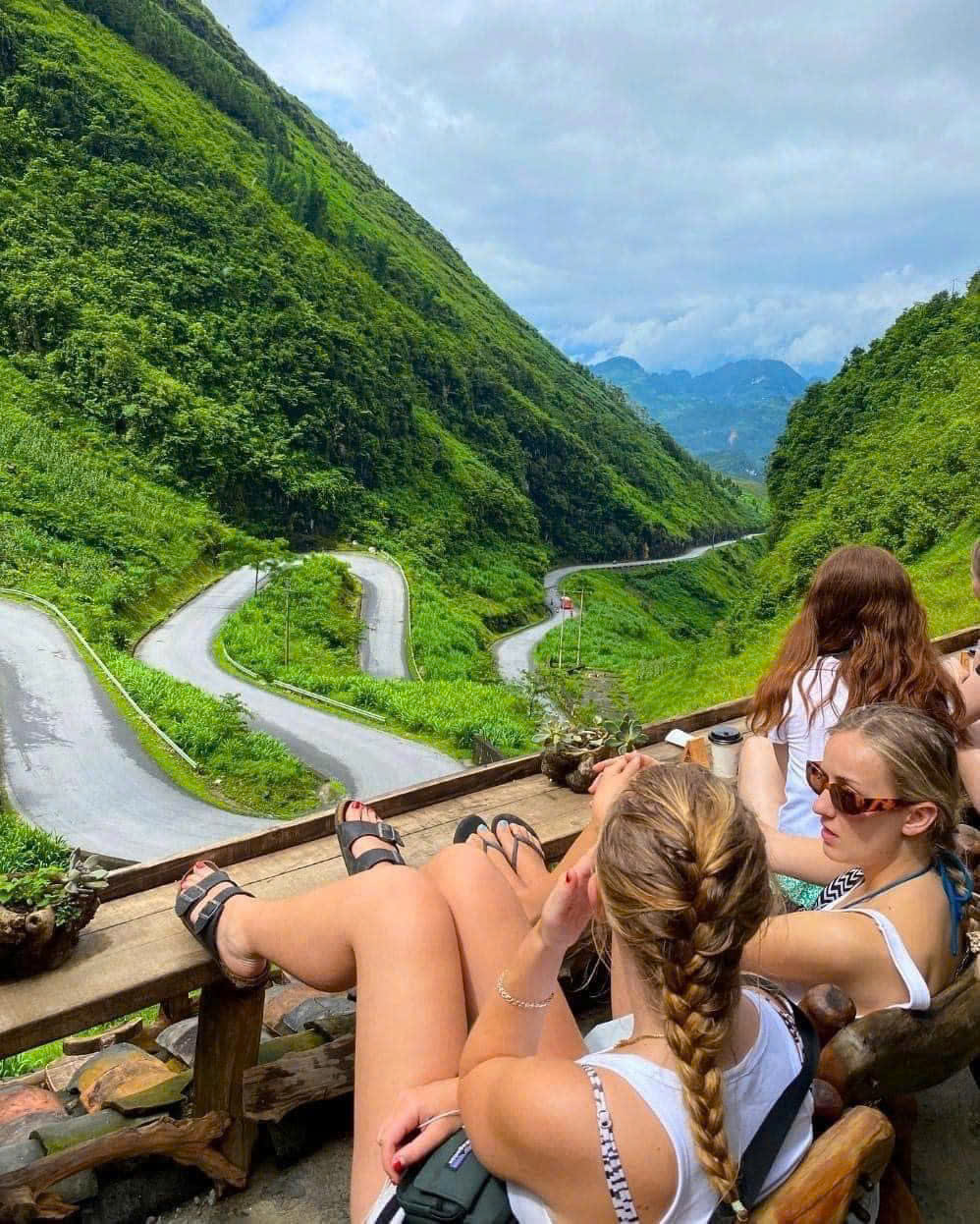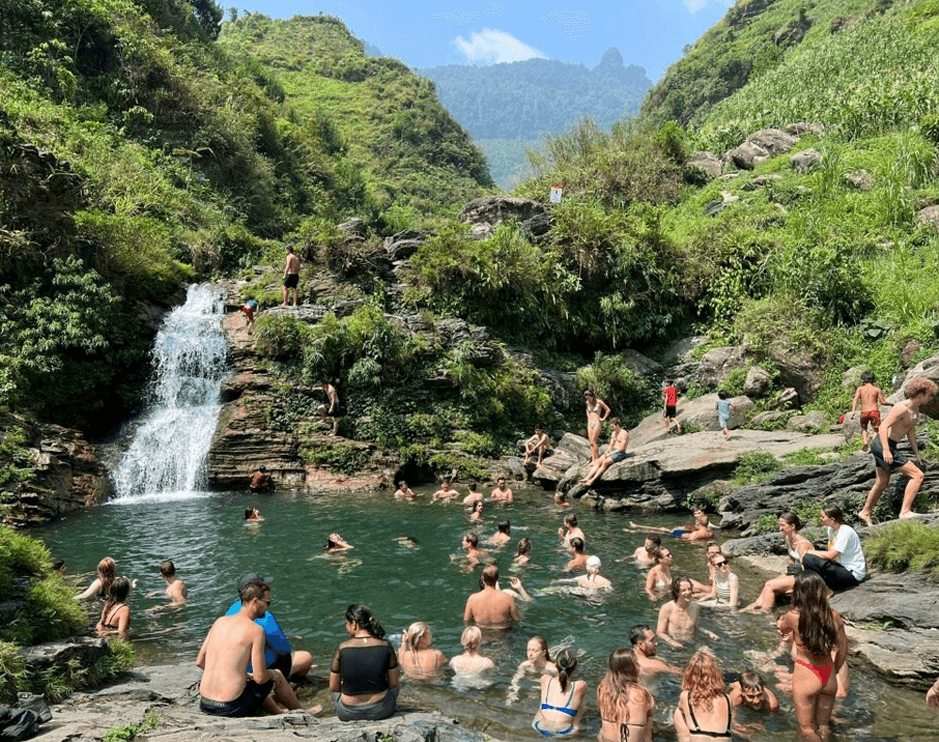1. Where is the Nho Que River?
1.1. Location and geographic marvel
The Nho Que River originates from the mountainous region of Yanshan (Yunnan, China) at an elevation of 1,800 meters, crossing into Vietnamese territory through the rugged terrain of Dong Van District in Ha Giang Province. While the river stretches for a total of 192 kilometers, only 46 kilometers flow through Vietnam, yet this relatively short stretch contains some of the most spectacular scenery in Southeast Asia.
The river flows through several key areas: starting from Seo Lung hamlet in Lung Cu commune, winding through the legendary Tu San Canyon, following the famous Ma Pi Leng Pass, and eventually reaching Meo Vac before splitting into two branches that flow toward Cao Bang Province, where it ultimately merges with the Gam River.
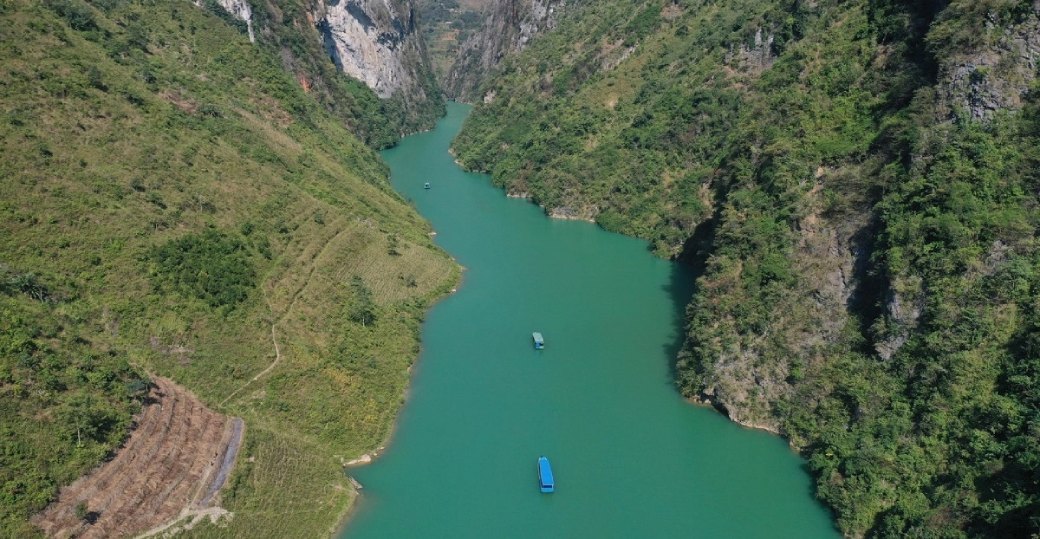
Source: Vnexpress
1.2. Getting to Nho Que River
Reaching the Nho Que River requires careful planning and preparation. From Hanoi, the journey spans approximately 450 kilometers northward, typically taking 5-6 hours by private vehicle or motorbike. The most popular route follows the renowned Ha Giang Loop, a scenic circuit that has become legendary among adventure travelers.
For those preferring public transportation, buses depart regularly from Hanoi's My Dinh bus station to Ha Giang City, from where visitors can arrange local transportation or join organized tours to reach the river. The winding mountain roads demand skilled driving and extra caution, especially during the rainy season when conditions can become challenging.
2. The mesmerizing beauty of Nho Que River
2.1. The enigmatic jade waters
What sets the Nho Que River apart from any other waterway in Vietnam is its extraordinary color – a deep, mystical jade-green that seems to glow with an inner light. This unique hue isn't merely a reflection of the surrounding landscape but rather stems from the river's own mineral composition. The distinctive coloration is derived from cobalt and copper minerals dissolved in the water, resulting in a permanent, jade-like appearance that remains consistent throughout most of the year.
Unlike other rivers that change color based on weather conditions or surrounding vegetation, the Nho Que maintains its signature emerald tone with remarkable consistency. Even during rare seasonal changes, when the water might shift to a matcha-green during heavy rains or take on a subtle pink hue during flood season, it quickly returns to its characteristic jade appearance.
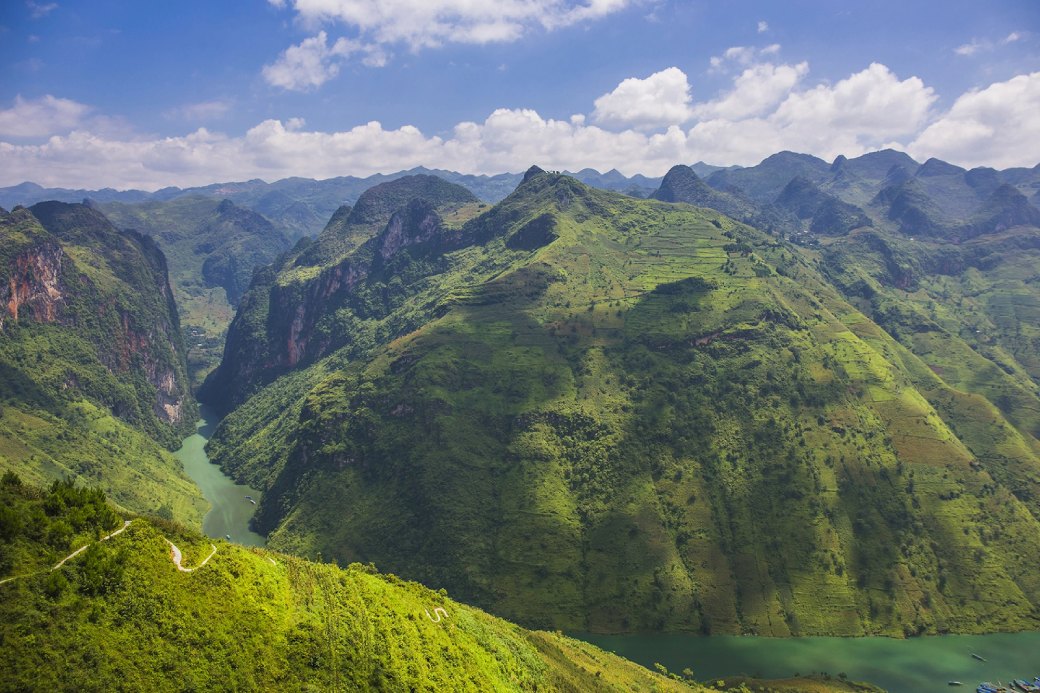
2.2. A river's dance through ancient stone
The Nho Que River's most captivating feature is its serpentine course through the dramatic karst landscape. Viewed from above, the river resembles a graceful dancer's silk scarf floating through the air, creating endless curves and loops as it navigates around towering limestone peaks. This meandering path, carved over millions of years, showcases nature's patience and artistry in sculpting one of the world's most beautiful river valleys.
The surrounding landscape tells a story spanning geological ages – when this region was still beneath an ancient ocean, the limestone formations we see today were slowly taking shape on the seafloor. The interaction between the flowing water and the region's unique geology has created a harmonious balance between the river's gentle curves and the dramatic vertical cliffs that frame its journey.
2.3. Flora and riverside communities
The riverbanks support lush vegetation that changes dramatically with the seasons. During spring, the landscape explodes with the pink blossoms of peach trees and the pristine white of plum flowers, creating a stunning contrast against the jade waters. Summer brings vibrant green corn terraces that cascade down the mountainsides like natural staircases, tended by local ethnic minorities who have called this region home for generations.
The Hmong people, in particular, have developed a deep connection with the river and its surrounding landscape. Their traditional stilt houses dot the riverbanks, and their agricultural practices have shaped the terraced fields that provide such spectacular scenery. These communities represent a living culture that has adapted to and thrived in one of the world's most challenging agricultural environments.
Related articles:
3. Best way to explore the Nho Que River
3.1. Boat tours through paradise
The most intimate way to experience the Nho Que River is through a boat tour, an adventure that has become increasingly popular among travelers seeking to get up close with this natural wonder. Tours typically begin at Trang Huong Bridge, approximately 10 kilometers from the Ma Pi Leng Pass junction, where local operators provide boat services and safety briefings.
The boat journey lasts approximately 90 minutes, during which passengers are treated to constantly changing perspectives of the river's most spectacular sections. As the boat glides along the pristine waters, travelers can observe the intricate details of the limestone cliffs, spot local wildlife, and experience the profound tranquility that comes from being surrounded by such untouched natural beauty.
The highlight of any boat tour is passing through the legendary Tu San Canyon, known as the deepest gorge in Southeast Asia. Here, vertical cliff walls rise 700-800 meters on either side, creating a natural cathedral of stone that inspires awe and reverence. The narrow canyon, stretching 1.7 kilometers in length, offers a truly humbling experience as passengers realize their small place within this geological masterpiece.
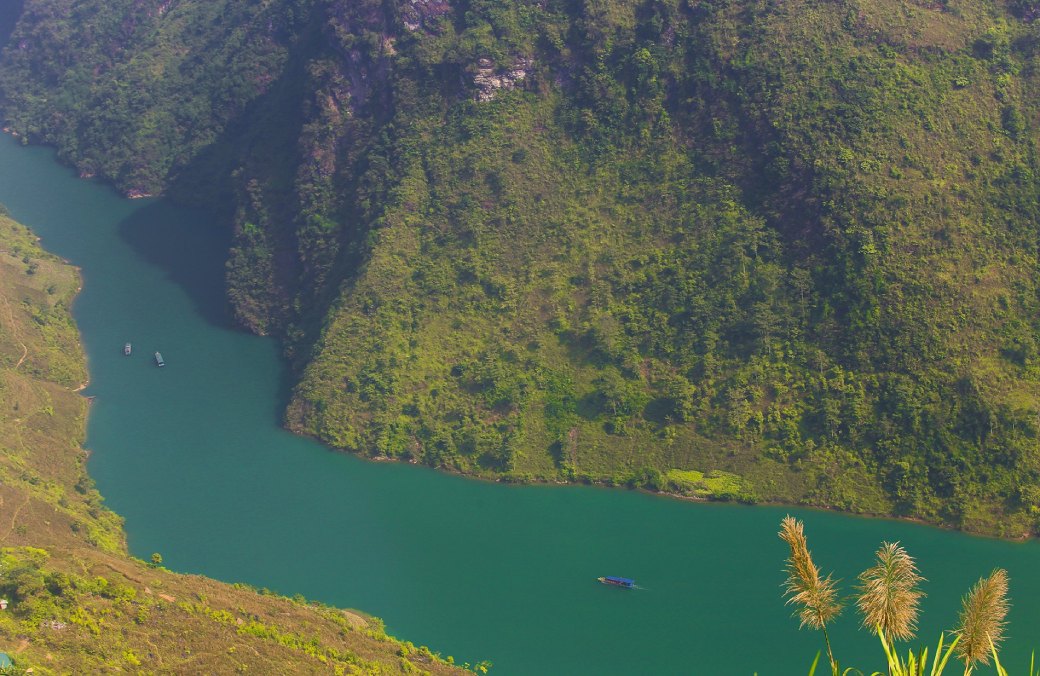
Source: Xuan Phuong
3.2. The legendary Tu San Canyon: Southeast Asia's deepest gorge
Tu San Canyon, also known as "Rang Quy" (Devil's Teeth), represents one of the most dramatic geological features in Southeast Asia. With a depth reaching nearly 1,000 meters and cliff faces that plunge at angles between 70-90 degrees, this canyon has rightfully earned its reputation as the region's deepest gorge.
The canyon's formation tells a story millions of years in the making, when tectonic forces and water erosion combined to carve this spectacular chasm through the limestone plateau. Standing at the bottom and looking up at the towering walls creates a sense of being in nature's cathedral, where light filters down through the narrow opening above, creating an almost spiritual atmosphere.
For adventure seekers, the canyon offers opportunities for more than just boat tours. Some brave souls have attempted to navigate the canyon by kayak or inflatable boat, though the sharp rocks and swift currents make this an extremely dangerous undertaking suitable only for the most experienced adventurers.
3.3. Nho Que River from Ma Pi Leng Pass
For those who prefer to admire the Nho Que River from above, Ma Pi Leng Pass provides what many consider the most spectacular viewpoint in all of Vietnam. Known as one of the country's "Four Great Passes," Ma Pi Leng (meaning "Horse's Nose Bridge") offers breathtaking panoramic views of the river winding through the valley far below.
The pass itself is an engineering marvel, with roads carved directly into the cliff faces at dizzying heights. Multiple viewpoints along the route provide opportunities for photography and contemplation, each offering a slightly different perspective on the river's journey through the landscape. The contrast between the jade-green water below and the gray limestone cliffs creates a natural artwork that changes with the light throughout the day.
Travelers should exercise extreme caution when stopping along the pass, as the roads are narrow and the drops are steep. However, for those willing to take the time to safely explore the viewpoints, the rewards are truly extraordinary.
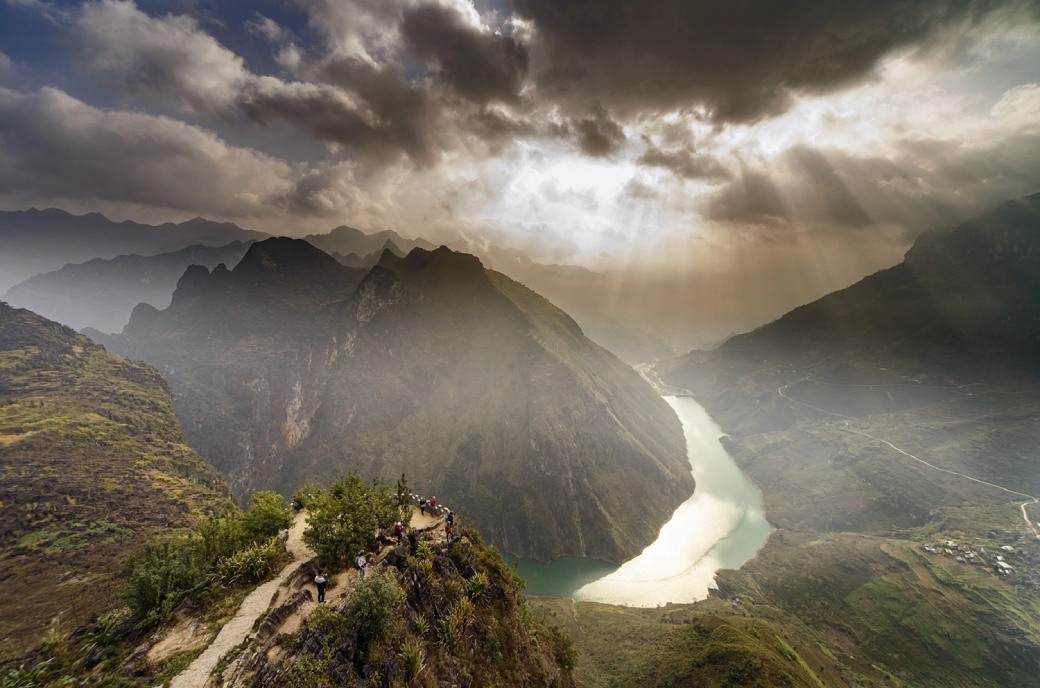
Source: Vnexpress
3.4. Riverside camping
For the ultimate Nho Que River experience, nothing compares to spending a night camping along its banks. Several areas near the river offer suitable camping spots, where visitors can set up tents and fall asleep to the gentle sound of flowing water while gazing up at some of the darkest, most star-filled skies in Vietnam.
Camping along the Nho Que requires careful preparation and respect for the local environment. Campers should bring all necessary supplies, including food, water, and appropriate camping gear for mountain conditions. It's essential to follow Leave No Trace principles, ensuring that the pristine beauty of the area is preserved for future generations.
The experience of waking up beside the jade waters as morning mist rises from the river surface is truly magical. Many campers report that this peaceful morning moment becomes one of their most treasured travel memories.
4. Planning your visit: Essential information for travelers
4.1. Best times to visit
The Nho Que River can be visited year-round, but each season offers a different experience. The dry season from September to April is generally considered optimal for boat tours and outdoor activities, as water levels are more predictable and weather conditions are generally more stable.
Spring (March-May) brings the most spectacular scenery, with blooming flowers creating a colorful backdrop for the jade waters. This is also when local ethnic minorities engage in traditional agricultural activities, providing cultural insights alongside natural beauty.
Summer months (June-August) offer lush green landscapes and warm weather, though occasional heavy rains can affect boat tour availability. The intensity of the green vegetation during this period creates a particularly striking contrast with the river's jade coloring.
Winter visits (December-February) can be chilly but offer crystal-clear waters and excellent visibility for photography. The cooler temperatures also make hiking and outdoor activities more comfortable during midday hours.
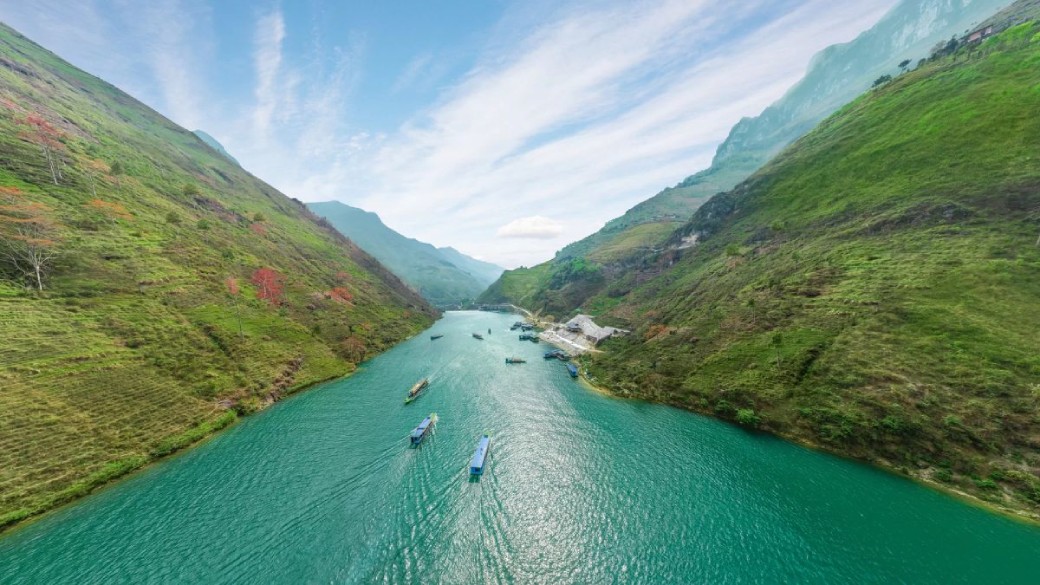
Source: Collected
>>> Read more: Ha Giang weather all year round
4.2. Important travel considerations
Visitors to the Nho Que River should be prepared for challenging mountain conditions and respect local customs and environmental protection measures. The region's remote location means that facilities are limited, so bringing necessary supplies and medications is essential.
Weather in the mountains can change rapidly, so layers of clothing and rain gear are recommended regardless of the season. The high altitude and steep terrain require reasonable physical fitness for most activities, and travelers with mobility issues should carefully consider which experiences are suitable for their abilities.
Cultural sensitivity is particularly important in this region, where local ethnic minorities maintain traditional ways of life. Visitors should always ask permission before photographing people or entering private property, and should respect local customs and traditions.
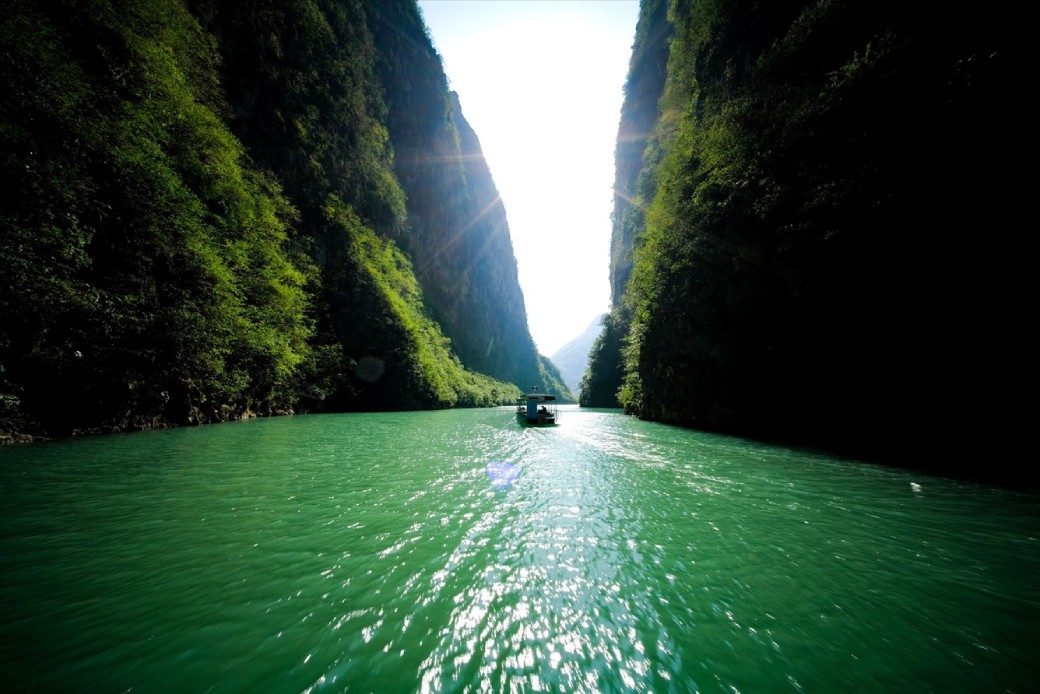
Source: Collected
5. Beyond Nho Que: Exploring Ha Giang's cultural treasures
1 - Hoang Su Phi
Just a few hours from the Nho Que River, the Hoang Su Phi terraced fields represent another stunning example of the harmonious relationship between humans and nature in northern Vietnam. These ancient rice terraces, carved into mountainsides over centuries, create a stairway-like landscape that changes dramatically with the seasons.
2 - Dong Van Ancient Town
The historic town of Dong Van offers visitors a glimpse into the region's rich cultural heritage. This well-preserved ancient settlement features traditional architecture, local markets, and museums that tell the story of the area's diverse ethnic communities and their centuries-old customs.
3 - Lo Lo Chai Village
The Lo Lo ethnic minority village of Lo Lo Chai provides an authentic cultural experience, where visitors can observe traditional crafts, sample local cuisine, and learn about the unique customs of one of Vietnam's smallest ethnic groups.
4 - The Vuong Family Mansion
This impressive stone mansion, built in the early 20th century, represents the architectural heritage of the region's wealthy merchants and offers insights into the area's history as an important trading center between Vietnam and China.
The Nho Que River stands as one of Vietnam's most precious natural treasures, a place where the raw power of geological forces has created something truly extraordinary. Its unique jade-colored waters, dramatic canyon setting, and the cultural richness of surrounding communities combine to create an experience that touches the soul and creates lasting memories.
